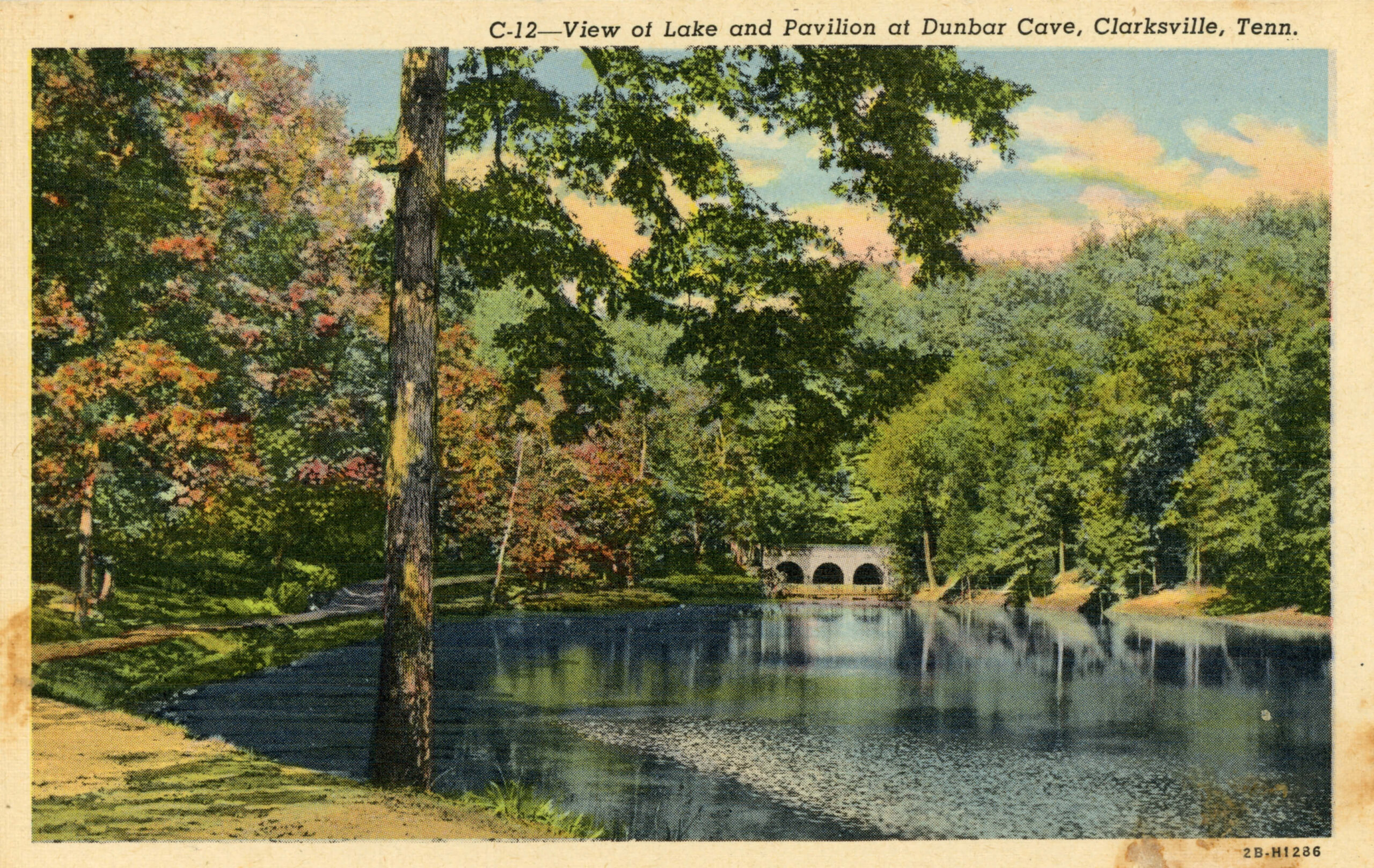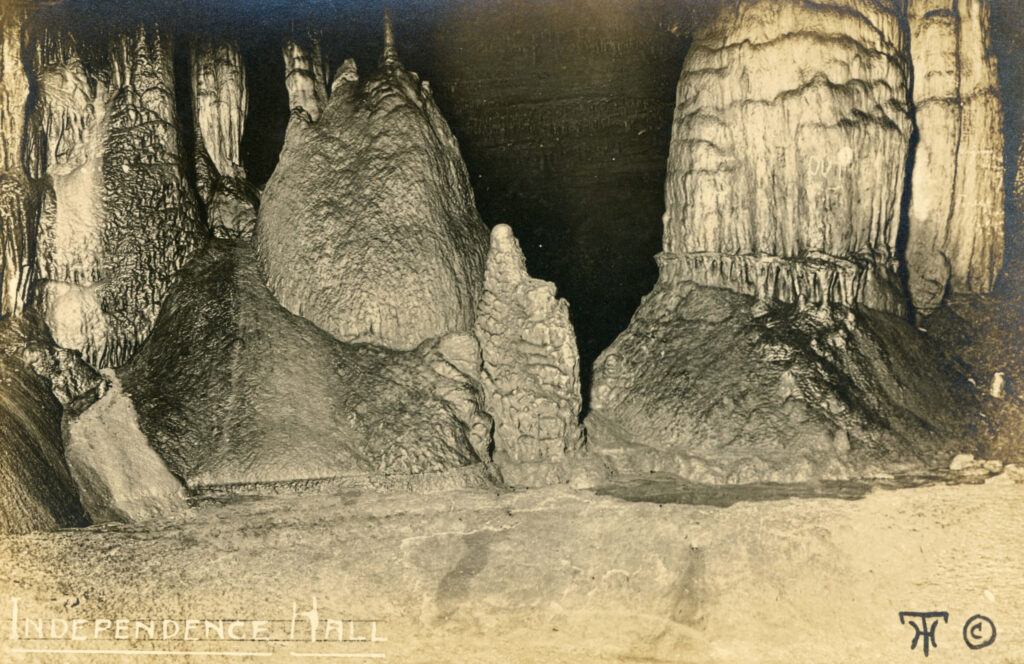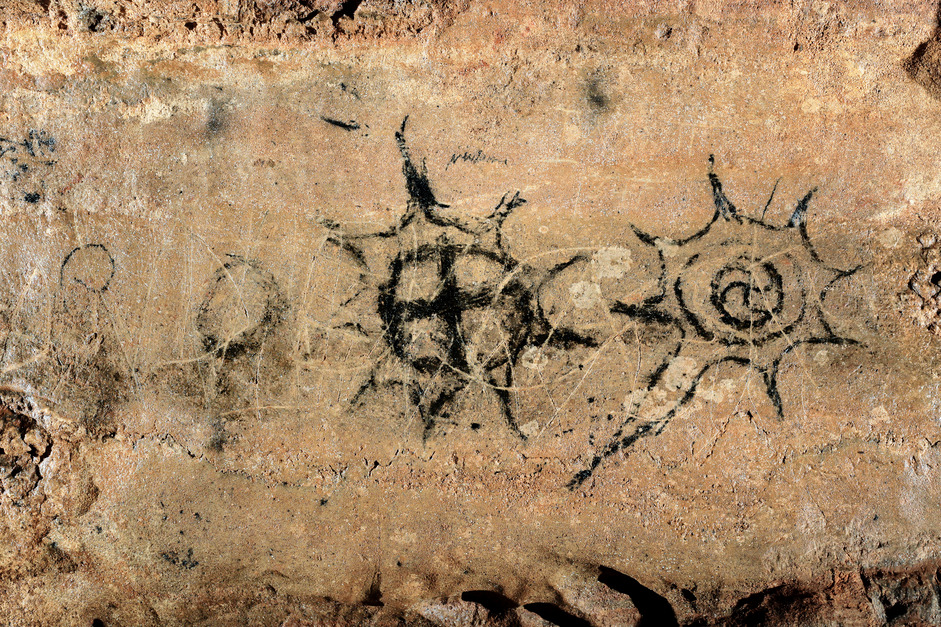
By Meghan E. Gattignolo
It’s almost that time of year again! Time to submerge yourself underground into the real hard-rock history of Clarksville, Tennessee with a tour through Dunbar Cave! Nowhere else in Montgomery County will give you a wider survey of the area’s history. From 10,000-year-old stoke marks to Civil War portraits and remnants of music history, this cave has enough to satisfy any curious mind.
Dunbar Cave State Park reopens tours inside the cave starting May 11th! Here are just a few of the things that visitors can experience on a cave tour:
Cool Cave Formations
Most cave enthusiasts enjoy them for the unique formations only found inside a natural limestone cave. Dunbar Cave is a living cave, which means it’s in the process of creating new formations all the time. Dripping stalactites, rippling flowstone and rimstone pools transform the cave into a magical place. Some formations are even historical, with references to them in 19th-century newspaper articles!
However, Dunbar Cave is also a severely damaged cave. During its former lives as a tourist attraction and music venue, the cave was subjected to visitors and trespassers who broke off pieces of formations to take home as a souvenir.
Since 1973, Tennessee State Parks have taken huge measures to learn more about Dunbar Cave and how to protect its ecosystem and growth. The ranger staff at Dunbar Cave do their best to allow the cave to exist as naturally as possible. Human-made structures are kept to a minimum, tours are offered seasonally to support the cave’s wildlife, and only handheld flashlights and a few small LEDs are used as a light source in the cave. Additionally, tours today are designed to educate the visiting public about how to help keep the cave healthy and beautiful for future generations.

Independence Hall in Dunbar Cave
Postcard, ca. 1925
Courtesy of Billyfrank Morrison
Lots of Local History
Clarksville residents have been touring Dunbar Cave for fun since the 19th century. The names of residents from Clarksville’s by-gone decades litter the walls inside the cave. Austin Peay’s name can be found along one corridor, as well as Beach, Beaumont and Poston: names found throughout modern Clarksville on signposts and destinations.
Dunbar Cave is also tied to some interesting points throughout the entirety of Clarksville’s history. The cave was the center of real estate battles during the early days of Clarksville, as settlers were moving in during the late 18th century. Thanks to the diaries of Nanny Haskins and Serepta Jordan, as well as some evidence left behind inside the cave itself, we know soldiers during the Civil War (on both sides of the conflict) spent some recreational time in and around the cave. Most well-known is Clarksville’s ties to the earlier days of Music City’s country music scene with Roy Acuff’s legacy. The cave was part of Roy’s property when he owned Swan Lake, the swimming pool and the golf course next door during the postwar era when country music theme parks were enjoying popularity with American families.

Prehistoric charcoal drawings on the cave walls, overlaid by 19th-century graffiti
Photo by Alan Cressler
Mysterious Prehistory
The tour season starts with the single hour-long standard, Enter the Underworld. As ominous as the name sounds, it’s a favorite. On this tour, visitors learn about a unique feature of Clarksville’s cave. Dunbar Cave is special because it contains a lot of evidence of local prehistoric life that’s still intact, even in spite of the large amounts of traffic the cave has been subjected to over the last 240 years.
Prehistory ended a few thousand years ago for parts of Europe, Africa and the Middle East.
In North America, however, prehistory went on a bit longer. The Mississippian people are considered to be the last prehistoric society within North America. They spread throughout the midwest and southeast regions, but their civilization went into decline roughly 600 years ago. By the time the Spanish arrived in 1492, they had already dispersed into smaller groups. Before that, academics rely on the artifacts left behind to learn how they lived. Weapons like spear points and arrowheads, remnants of clothing or jewelry, and even cave drawings help to paint a picture of what life was like prior to European contact.
In 2005, drawings in the cave were identified as being left by the Mississippians and the medium used to create the drawings was carbon, dated to be at least 600 years old. While historians can know few facts about what life was like for the Mississippians, we do have a connection to help us understand what they may have believed. Cherokee beliefs have been passed down through the generations stretching all the way back to the time of the Mississippians. The Eastern Band of Cherokee is a group who helps Tennessee State Parks interpret works left behind by past Indigenous people and inform the rangers’ interpretations used during tours.
Dunbar Cave State Park’s tour season runs from May through September every year. Tickets for Enter the Underworld are $18 for ages 13 and up, and $13 for ages 5-12. Starting in June, the Spray Hall and Unknown Realms tours will also be available. You can reserve any tour now by either visiting the park’s website or calling the park’s Visitor Center at 931-648-5526 any day of the week from 8am-4:30 pm.
See the cave in May, and don’t forget to bring your flashlight!

Meghan E. Gattignolo is a freelance writer and longtime Clarksville, TN resident. She loves to obsess about historical subjects and annoy her family daily with unsolicited random facts. Meghan holds a History B.A. from Austin Peay State University and lives in town with her husband and two children.